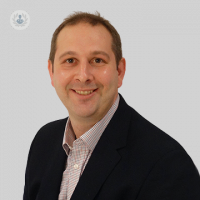Skeletal dysplasia: getting to the bones of it
Written by:If a child’s bones grow or develop abnormally, they may have skeletal dysplasia; a broad term that encompasses many conditions. Esteemed consultant paediatric orthopaedic surgeon Mr Sam Weston-Simons, based in London, shares his expertise on the condition. He explains exactly what the condition is, how it is diagnosed, how it is treated, and more.

What is skeletal dysplasia? How can it affect child development?
Skeletal dysplasia is an over-arching term that includes a wide variety of conditions and disorders. For example, there are conditions such as osteogenesis imperfecta (OI), also sometimes called brittle bone disease, all the way through to disorders that may affect the growth plates in children.
Ultimately, with a broad term like skeletal dysplasia, the key is to make sure that you identify the exact condition that the child has. That way, any treatments can be tailored to that child’s specific needs.
This also presents a challenge when it comes to child development as well; the key is to identify what disorder a child might have to predict, not only what sort of treatments might be beneficial, but also the child’s development as a whole.
Is skeletal dysplasia life-threatening?
Generally speaking, skeletal dysplasia isn’t a life-threatening condition. There are a number of life-imiting conditions that are associated with it, often related to musculoskeletal issues but also some of the disorders can be associated with the abnormalities of a child’s biochemistry and physiology, which may be specific to that dysplasia. Due to the advances in the genetic diagnosis of children with skeletal dysplasia, we’ve begun to identify specific treatments that are specific to those children’s needs, both physiologically and from a musculoskeletal point.
When is skeletal dysplasia most commonly diagnosed?
Diagnosis of skeletal dysplasia can often actually only happen once the child is a few years old. It is often difficult to specifically identify abnormalities of a very young child as they may only begin to display unusual activities or discrepancies from their peers when they are a little bit older. They may have a delayed start to walking or an odd gait pattern, and it’s only at this time that an issue might be raised. From there, they may need to see a paediatrician, specialist clinic or surgeon, who will discuss what genetics need to be investigated so the correct diagnosis can be given.
Very occasionally, conditions can be diagnosed with prenatal scans, as well as specific genetic testing when the child is in the womb but this is generally only done if there is a family history of skeletal dysplasia that may require investigations to be carried out.
What causes skeletal dysplasia?
Skeletal dysplasia conditions are often related to the underlying genetics of a child. This is partially why it is such a wide-ranging term that includes many conditions. Each child tends to have a specific genetic abnormality, even within a subgroup. For example, there are children with a disorder that specifically affects the growth plates and within that disorder, there are a lot of other subgroups of children who have very different genetics. As our genetic testing and understanding is increasing, as well as the further understanding of the overall human genome, we’re beginning to understand that there are conditions within conditions.
The diagnosis of skeletal dysplasia comes from a genetic analysis, but having said that, the treatments remain much the same for a specific, global condition. The key is to identify the global condition to provide the best possible treatment and care for a child.
How can skeletal dysplasia be treated?
Children with skeletal dysplasia are affected in many different ways and the key to treating children with this condition is identifying exactly what those child’s needs are. Some children might be affected by slightly shorter stature than others and they need to have access to certain desks at school, for example, to maximise their level of function. Other children may have associated endocrine abnormalities, such as diabetes, which need to be controlled.
From the musculoskeletal point of view, it’s vital to ensure that function is maintained and that the anatomy is as functional and efficient as possible. There may be different times that intervention is required but we try to minimise them so as not to disrupt a child’s development. However, as children are growing there is the risk that these issues can reoccur, despite interventions, because of the underlying diagnosis which is why understanding the genetics is key to any possible surgical planning. It’s crucial to diagnose what condition a child might have so that we can tailor any treatment or surgery to their needs.
If you are interested in booking a consultation with Mr Sam Weston-Simons, you can do so by visiting his TopDoctors profile today.


